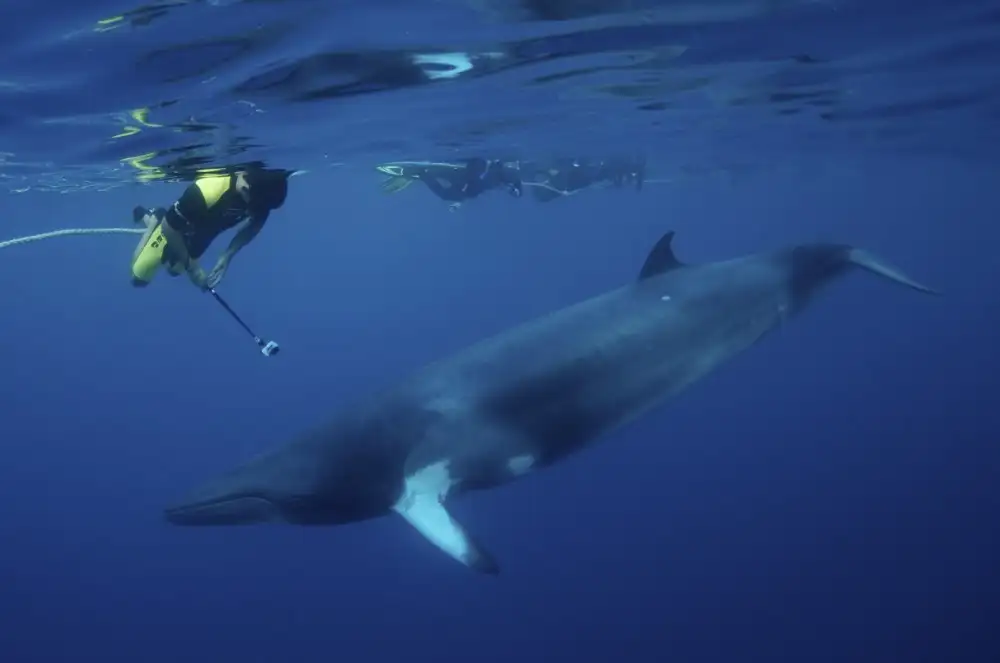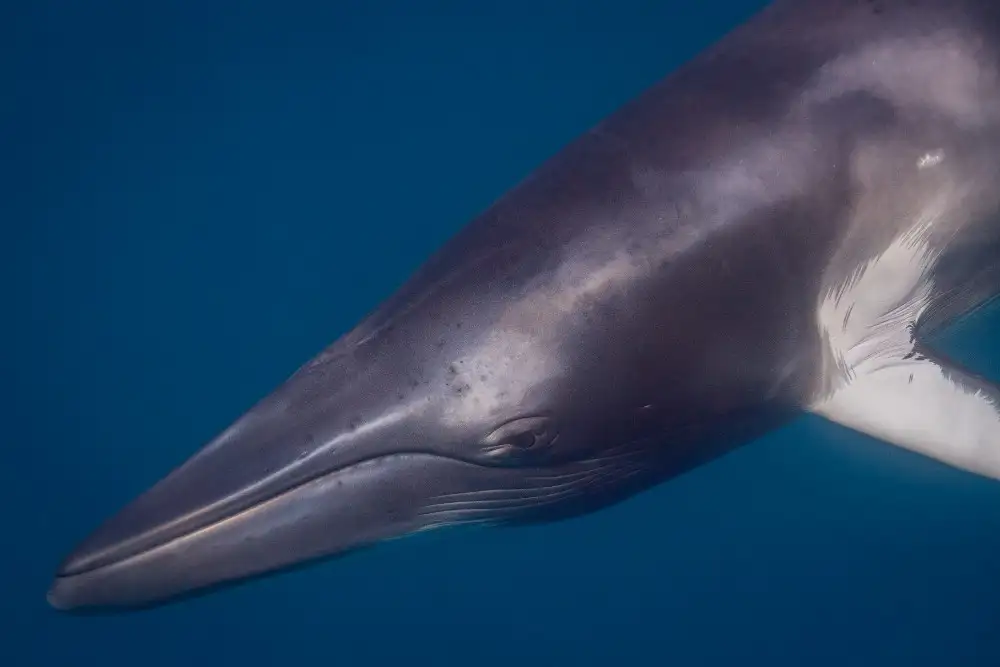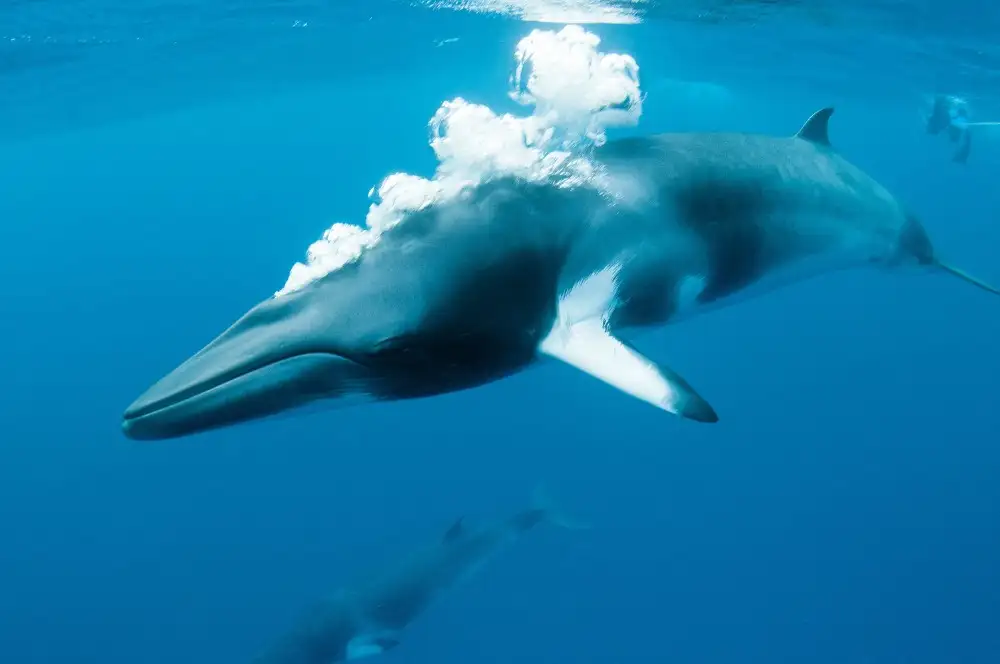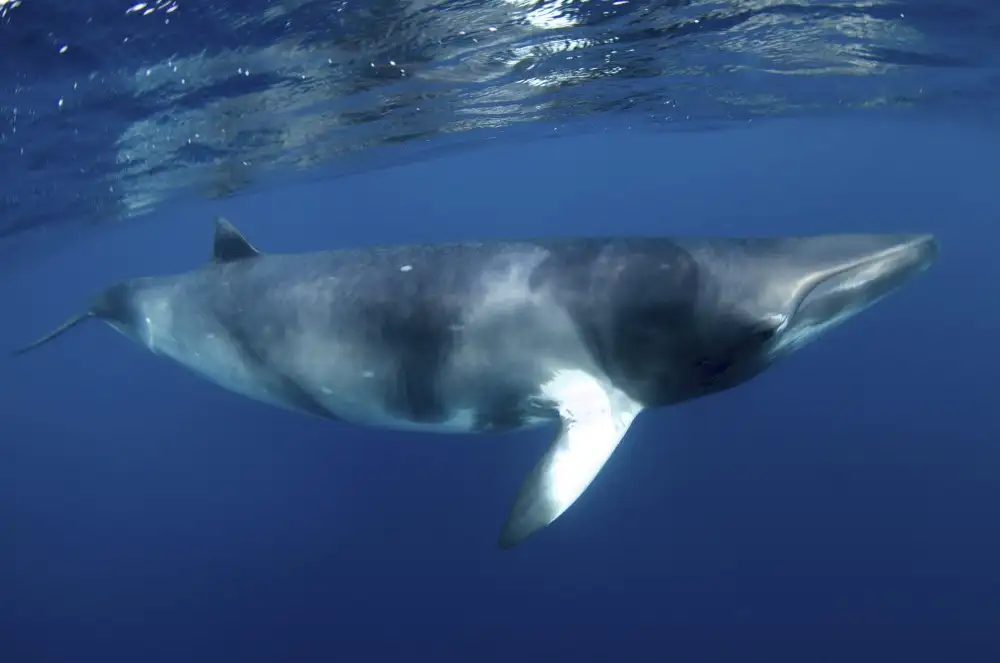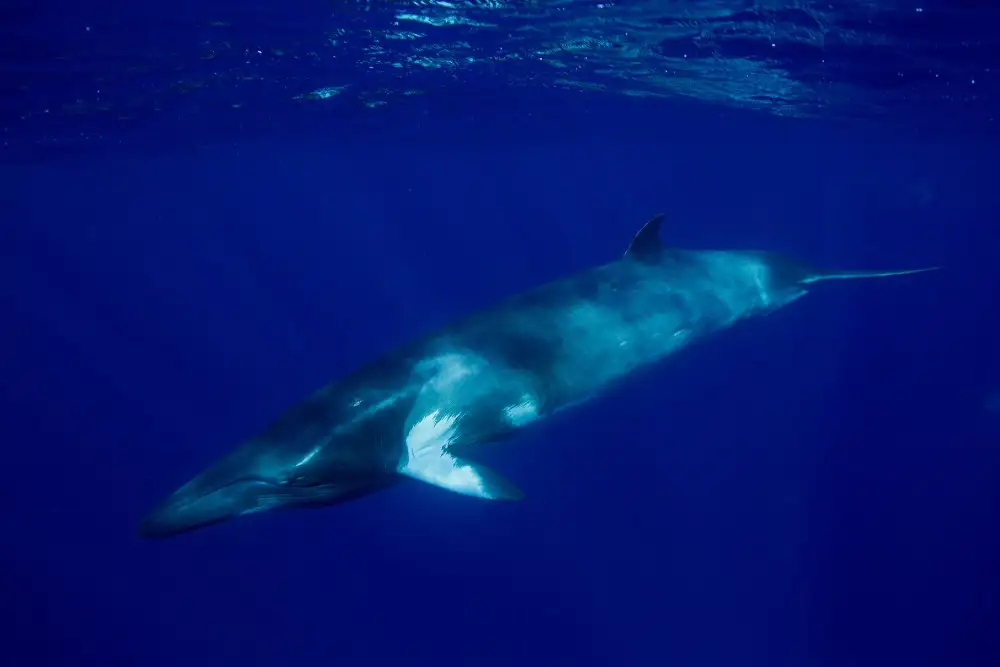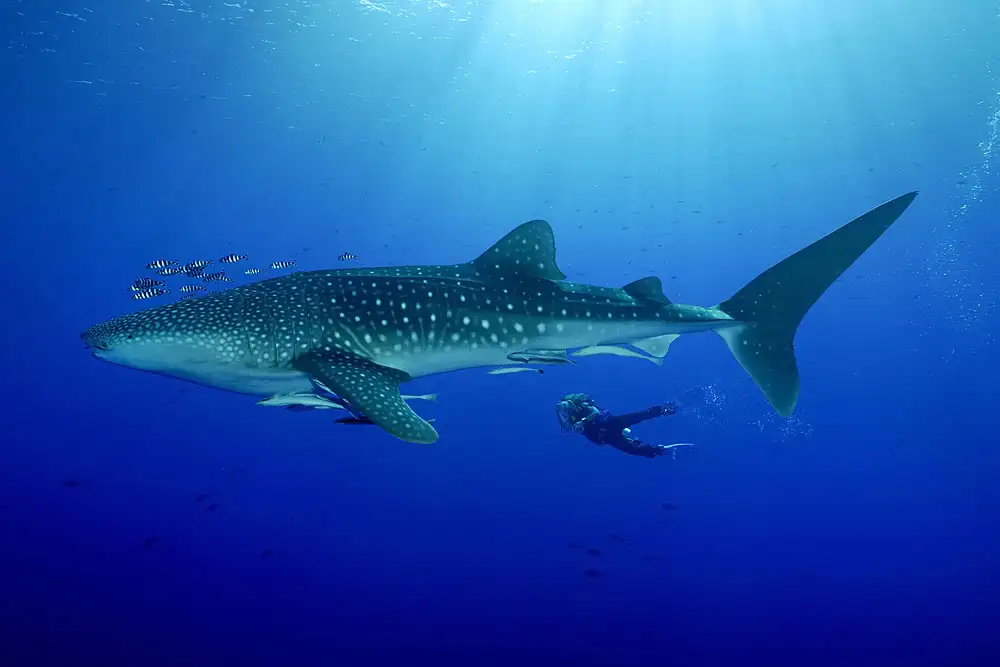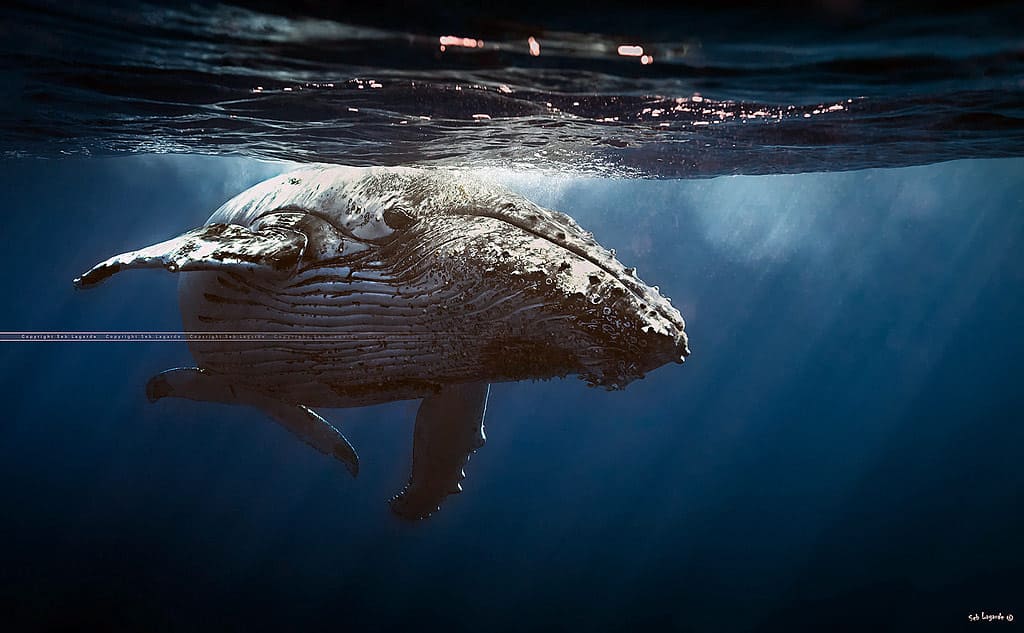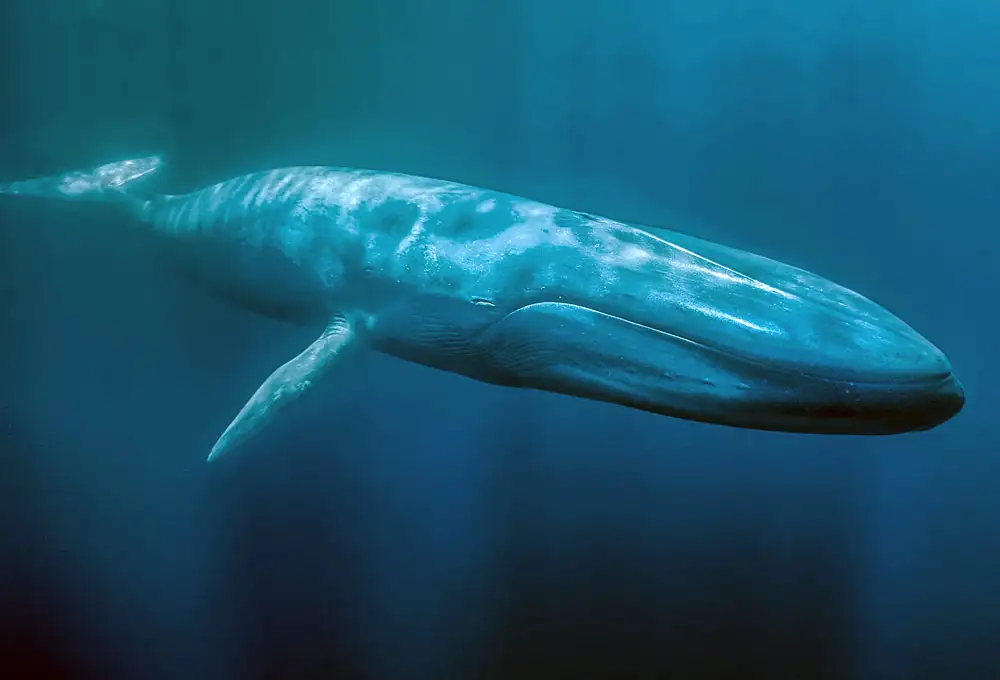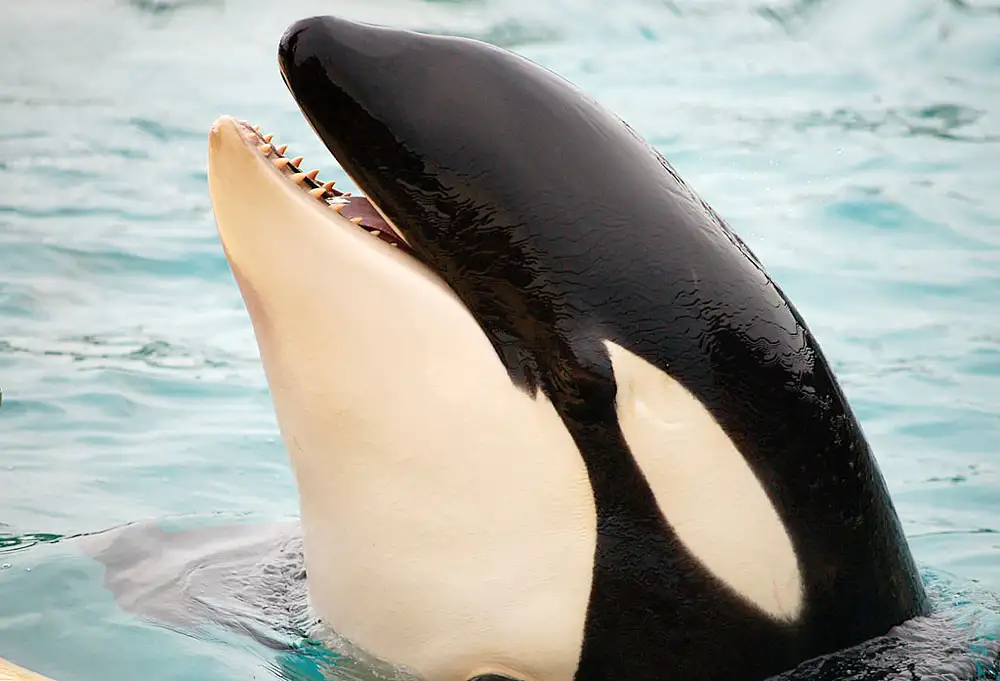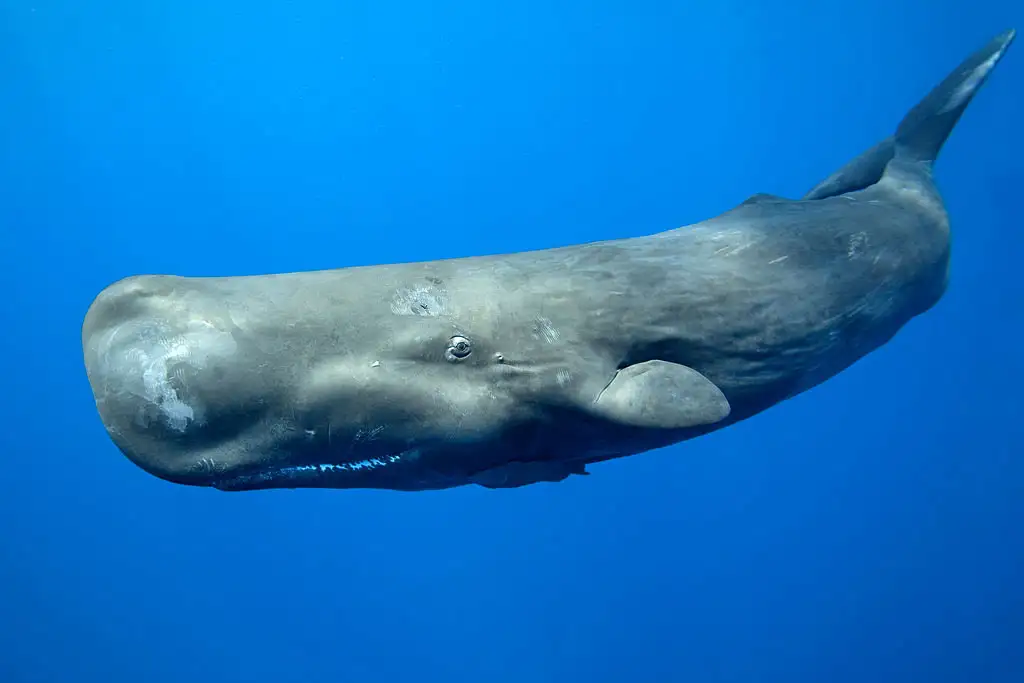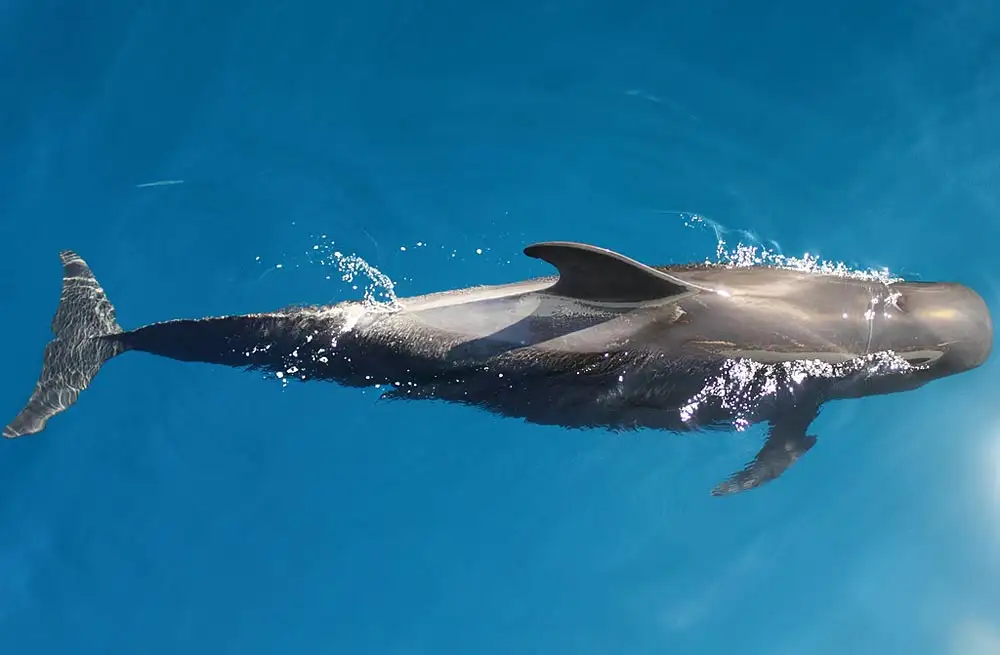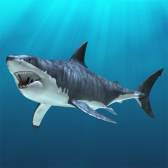Minke Whale
IUCN
LCBasic Information
Scientific classification
- name:Minke Whale
- Scientific Name:Balaenoptera acutorostrata
- Outline:Giant Fish
- Family:Balaenopteridae Balaenoptera
Vital signs
- length:7–10.7 m
- Weight:c. 4.5–10 t
- lifetime:c. 30–50 years (estimated)
Feature
Small rorqual; pectoral white band; solitary/small groups; lunge‑feeding with ventral pleats.
Distribution and Habitat
North Atlantic & North Pacific; summers at higher latitudes, winters at mid–low latitudes; coastal and offshore.
Appearance
Dark‑grey dorsum, white belly; forward‑set falcate dorsal fin; 50–70 ventral grooves; low blow.
Details
Common minke whale (Balaenoptera acutorostrata) is one of the smallest rorquals (family Balaenopteridae), widespread in the North Atlantic and North Pacific. It feeds on small schooling fish and krill via lunge‑feeding with expandableventral pleats. IUCN: Least Concern (LC).
Identification
Length 7–10.7 m, mass ~4.5–10 t; dark‑grey back, white belly; pectoral white band common; falcate, forward‑set dorsal fin;50–70 ventral grooves; low blow.
Ecology
Prey includes sand lance, herring, capelin, mackerel and euphausiids; mostly solitary or in small groups; uses lateral lunges, shore‑drives and tidally‑driven fronts for efficient feeding; dives typically a few minutes, up to ~15 min.
Threats & Measures
Whaling pressure persists in some regions (historical & present).
Entanglement in fixed gear and ship strikes.
Noise and climate‑driven shifts in prey/habitats.
Measures: dynamic protection of feeding/migration corridors, vessel speed/routing, quieter‑ship initiatives, and ropeless gear pilots.
FAQ
Q1. Antarctic vs. common minke? B. bonaerensis is mainly Southern Ocean; B. acutorostrata often shows a pectoral white band and occurs in the N Atlantic/N Pacific.
Q2. Nearshore? Frequently seen in bays/fjords and along tidal fronts.
Q3. Grouping? Usually solitary or small groups; forms aggregations at dense prey patches.

